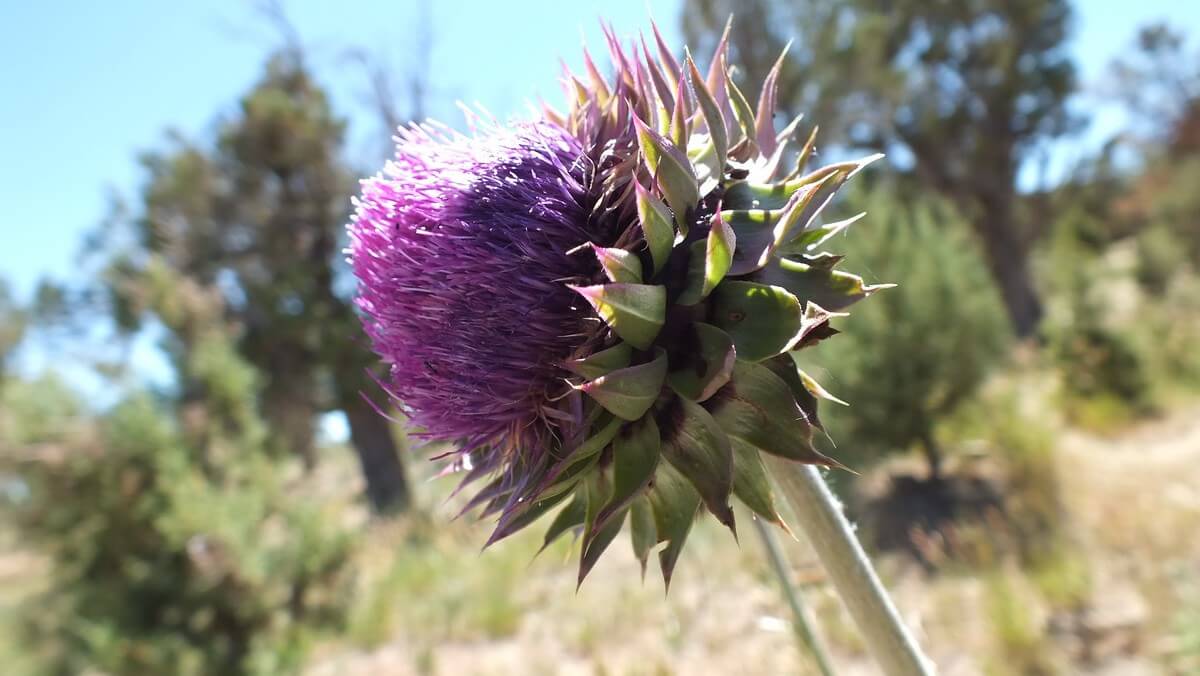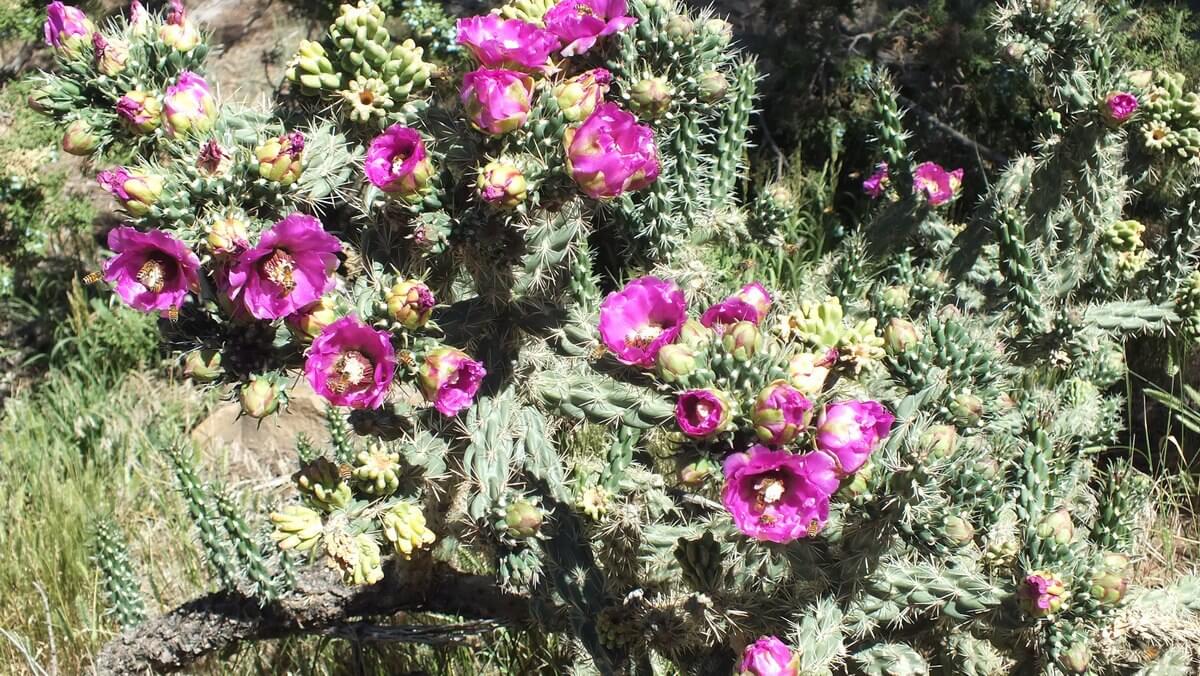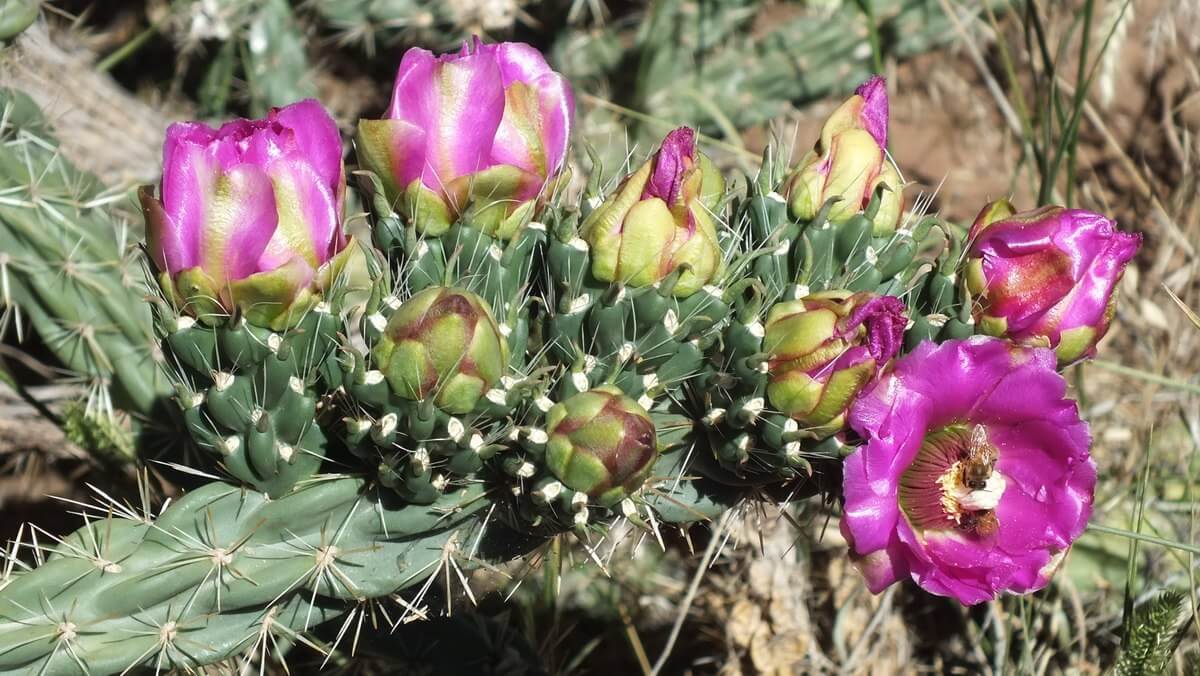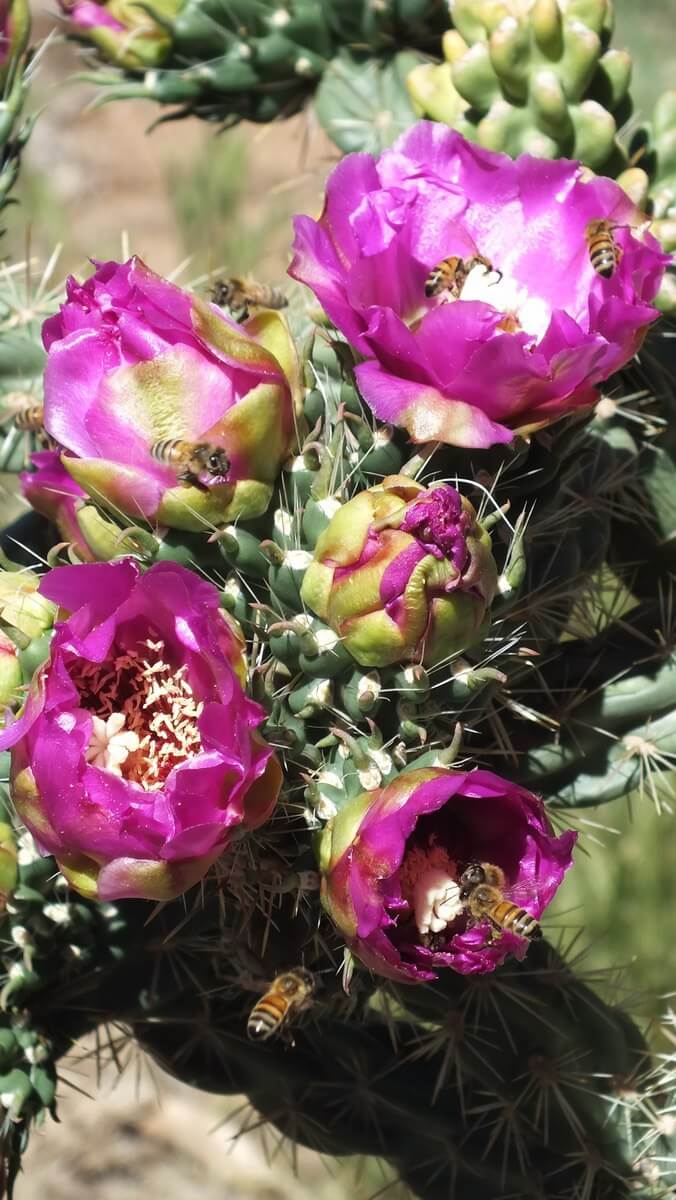Flamboyant Cacti at Mesa Verde National Park
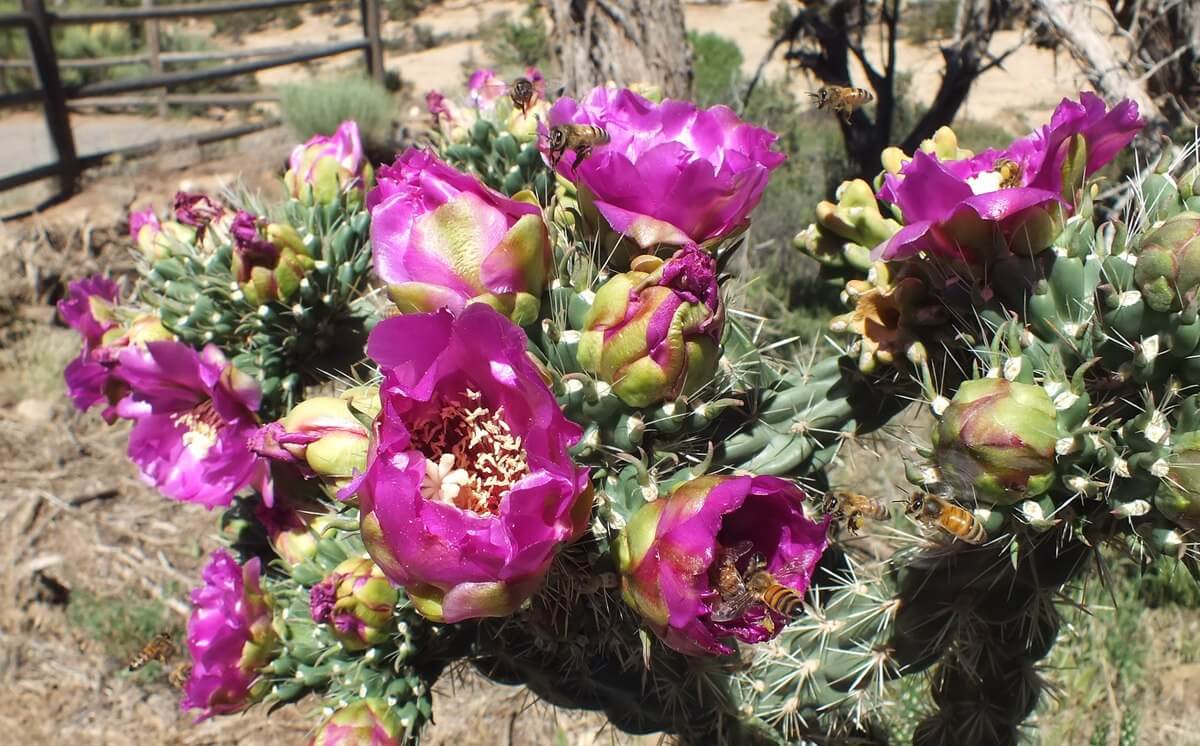
From the Visitor Centre at the entrance to Mesa Verde National Park in Colorado, Bob and I ascended a sinuous and steep roadway to the Museum that is located near Spruce Tree House, one group of cliff dwellings open to the public. When we pulled into the parking lot, my attention was immediately captured by the most outstanding examples of wildflowers, Musk Thistle (Carduus nutans), that were bobbing atop tall stalks next to one of the adobe outbuildings.
I am a sucker for vibrant and showy flowers so I was enamoured with these stunning examples of cacti. Each intricate head was an impressive spherical composition of hundreds of tiny individual flowers, and the heads were between 3-5 centimetres across (1-2 in), with a few topping 7 centimetres in diameter (3 in).
It is the nature of Musk Thistle flowerheads to droop from the end of the stalk, giving rise to the plant’s alternate name, Nodding Thistle. These flashy members of the sunflower family are not admired by everyone. In fact, they are considered an invasive species having been introduced to North America from somewhere in western North Africa, Europe, some part of Asia or possibly Siberia.
Once Bob and I were close by the plants, we could see that the stems and leaves were very thorny. Fine cotton along the stems was interspersed with sharp spines, so you wouldn’t want to grab a few for a bouquet. Depending upon the location, Musk Thistle can grow to be 1-1.5 metres (3-5 ft) tall. With flowers on the end of each multi-branched stem, a plant in a favourable spot can support between 20-50 flowerheads; less fertile soil in a drier location will result in only 1-20 flowerheads per plant. Guess the dry, arid habitat at Mesa Verde challenged their ability to prosper.
Bob and I were eager to walk the trail down into the canyon and discover the unique cliff dwellings, but after crossing the parking lot to the garden beside the Museum, we were struck by the beauty of another huge cactus plant, a type of Cholla Cactus (Cylindropuntia imbricata).
Once again, voluptuous magenta-coloured blooms covered the plant, and dozens of plump buds waiting to unfold resembled delicate phyllo purses bursting with rich fruity goodness. The cactus was a feast for the eyes with its 6-10 centimetre (3- 4-in) wide blossoms, but the structure of the stems was aesthetically pleasing, too, with their pattern of long, oval lumps or tubercles.
On a Cholla Cactus, the new growth just below the flowers is more vivid in colour and more tender than the tubercles further along the stems. As the tubercles age, they fade to a greyish-green colour and grow longer and wider. It is these elongated smooth humps that give the cactus a rope-like appearance, accounting for a couple of its alternate names, Devil’s Rope or Devil’s Rope Pear.
One of the things that most intrigued us about the Cholla Cactus was the swarm of bees that was frantically collecting nectar from its blooms. Every single flower had several bees vying for space. No wonder these decorative cacti are used as a deterrent to thieves. When grown beneath a window, the bees on the plant, alone, would make a perpetrator think twice about climbing over the sill, but actually, the sharp, barbed spines that line the stems would likely do the most damage.
A Cholla Cactus protects itself with clusters of pale yellow, white or pink spines ranging in number from 3-15. Where they appear on new growth next to a flowerhead, the spines will be softer and shorter, but in a matter of a few short weeks, they will grow to their full length of 3 centimetres (about 1 in) and become stiff.
The throngs of bees contribute to the reproductive success of Cylindropuntia imbricata, which spreads by seeds after the fruit of the plant becomes very ripe. In this photo, you can see some immature fruit just lower left of centre, top centre and just right of centre. The barrel-shaped fruits start out green but ripen through various pale shades of yellow until, in their maturest state, they turn bright yellow. Often, these spineless berries are mistaken for flowers. If closely inspected, each fruit has a deeply depressed or hollow spot at one end where the bloom fell off. The fruit is knobbly like the stems, and although fleshy, it is dry and tasteless. That doesn’t stop birds and animals from consuming the fruit, which further spreads the seeds.
Bob and I learned that this species of Cholla Cactus is common in the Southwestern United States where it is often considered a weedy pest. Because it also regenerates from broken pieces that fall to the ground and set roots, the plants can easily take over a wide area. The plant we saw was about one metre (3 ft) tall with a multi-branched growth habit that resulted in quite a sprawling appearance. Taking kindly to arid regions, this species of Cholla Cactus can attain heights of up to 4 metres (13 ft) or more. Now that would be something to see when in full bloom.
Frame To Frame – Bob and Jean



